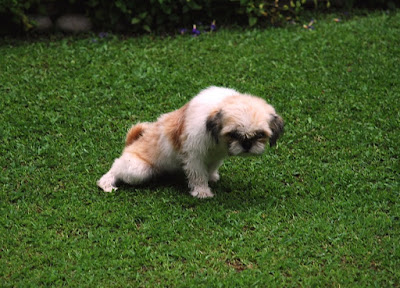Having a new puppy is not just about the highs and the joys of having a new living fur ball at home. You also need to clearly understand the responsibilities and duties that come with bringing a new life to the family or, to most of you, to your pack.
If you consider the possible outcomes, you may think, "What if my other dogs won't like him?" or "What if he soiled my leather sofa?". There could be countless scenarios that may make you hate yourself, make you crazy, or even make you cry your eyes out.
To avoid these, you should housebreak or potty train your new puppy. This training is as important as teaching your human child good manners.
Many dog lovers think that housebreaking is stressful, not just for them but for the puppy as well. But that doesn’t have to be the case. With proper knowledge and education, you can make the entire process a much more enjoyable experience for you and your furry friend.
Potty Training FAQs
Here are some of the most frequently asked questions about potty training a puppy:
1. When is the best time to start potty training my puppy?
According to Pets WebMD, the best time to potty train your puppy is twelve to sixteen weeks of age. By then, he can control his bladder and bowel movements better, enabling him to "hold it" much longer. However, it could also be too early for him to develop and show the most common destructive potty behaviors you should correct as soon as possible. While this level of innocence could make your job easier at first, this could also cause you to restart the training after some weeks or months.2. How long will a housebreaking take?
The duration of normal potty training may vary depending on your furry friend's age and behavior. Typically, it will take about 4 to 6 months to fully train a puppy to do his thing according to your preferences. The older the puppy is, the harder it will be to make him follow you since he has already developed undesirable potty-related behaviors that you may find challenging to correct.3. Are there any other housebreaking methods that I can follow/do?
There are actually many ways of housebreaking or potty training your puppy. Here are the most popular ones:a. Pretreated Pads
For this method, you must put pre-treated pads or papers on the floor inside your home. You should encourage your beloved pet to poop and pee in these areas. The pad gives off a scent that will attract dogs to use it whenever they need to go "poo-poo and pee-pee." If your furball is already showing signs that he needs to be eliminated, you should pick them up and carry them to the area where the pad is. Don't forget to praise them once they're done with their business.
b. Crate Training
For this method, you will need a crate or a cage with a sleeping blanket inside. The enclosure must only be big enough to accommodate the blanket. The primary goal of crate training is to teach the puppy to control its bladder and bowel movements. Apparently, dogs don't want to soil their sleeping areas. Hence, they must control their poop/pee inside the crate or cage.
c. Constant Supervision
You won't need any tangible tools for this method, just lots of time and patience. This method requires you to watch your puppy at all times. Once he starts with his pre-potty pattern, you should pick him up immediately and take him to his area. A small reward should be given after successfully doing it there.
Potty Training Tips
To ensure a successful potty training experience, here are some tips that you should know about:1. Identify the signs that your puppy needs to eliminate.
It is easy to determine if your puppy needs to go to the bathroom since they would exhibit the following telltale signs: barking, sniffing, circling, whining (if the puppy is in the cage) or scratching the door (if he's free inside the house). If he does all or at least most of these, take him outside or to his "special area" immediately.2. Monitor your energy.
According to Cesar’s Way, your energy will be essential to your dog’s training success. If you're constantly pressuring and trying to rush your puppy into doing his "thing," he'll feel stressed, making it more difficult to understand what he should or should not do. Avoid raising your voice when encouraging your puppy to poop or pee. Keep your distance, stay quiet, and let him do his potty peacefully.3. Build and follow a routine.
House training a puppy requires building and following a routine. Create a schedule that will be convenient for you to bring your puppy outside (our Mhershey's daily schedule is 7:00am - 12:30pm - 4:00pm - 7:30pm - 10:00pm). Ensure you take him out at the same time and area daily so your puppy will get used to this daily habit.4. Don’t forget to give rewards.
All dog owners know how important positive reinforcement is in training a puppy or a dog. Like what they always say, “What gets rewarded, gets repeated!”. Therefore, you must reward your pet if he does his potty right. A simple pat on the head or a healthy treat is enough to signal a job well done.There could be a lot of setbacks when trying to potty train a puppy. Still, with consistency, patience, commitment, and the proper knowledge, you and your fur baby can enjoy a hassle-free living experience.













0 comments:
Post a Comment